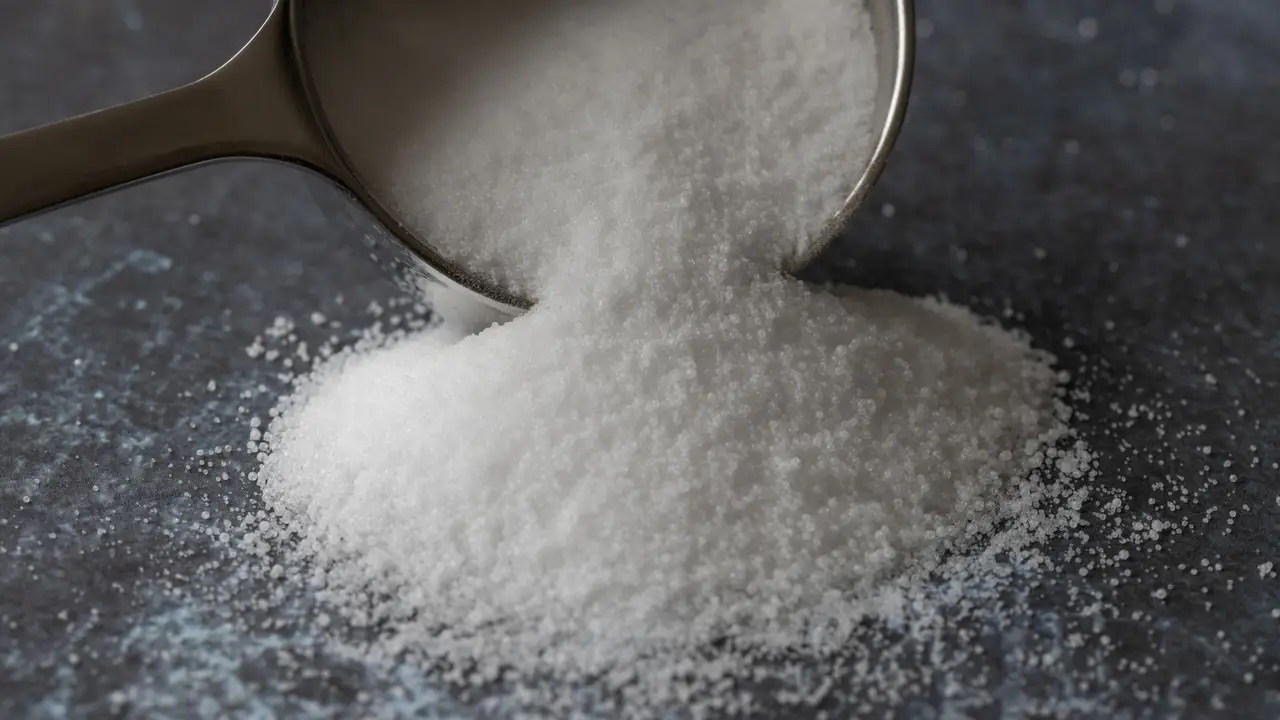
Picture this: You’re standing in the grocery store, scanning the label of your favorite diet soda or sugar-free snack. Your eyes catch a complicated-sounding ingredient: acesulfame potassium. Sounds like something straight out of a chemistry lab, right?
But before you put that product back, let’s break down everything you need to know about this fascinating sweetener that’s been making our lives a little sweeter for decades.
Let’s start with the basics. Acesulfame potassium—or Ace-K, as the cool kids call it—is the superhero of the sweetener world. Imagine sugar’s less problematic cousin: it’s 200 times sweeter than sugar but with zero calories. Discovered back in 1967 (think bell bottoms and disco), this sweetener has quietly revolutionized how we enjoy sweet treats without guilt.
In its physical form, acesulfame potassium looks like fine, white crystals, similar to sugar granules. This appearance makes it easy to blend seamlessly into foods and drinks, whether in powdered or liquid applications.
When chemists accidentally discovered Ace-K, it was like finding a golden ticket. They were working in a lab, and one researcher reportedly licked his finger after touching a compound—and boom! Sweetness magic happened. Talk about a sweet accident!1
Think of Ace-K as the ninja of sweeteners. It sneaks into your food, adds sweetness, and disappears without a trace. Here’s how:
I know what you’re thinking. “Another artificial ingredient? Is this actually safe?” Fair question! Let’s break down the scientific seal of approval:
These aren’t just casual nods. We’re talking about rigorous, microscope-level examinations that would make a detective proud.5
Here’s the cool part: your body is a bouncer to Ace-K. It gets absorbed, takes a quick tour through your digestive system, and then gets shown the exit via urine. No hanging around, no metabolic drama.6
Remember those scary headlines about artificial sweeteners causing cancer? Here’s the real scoop:
Some folks worry Ace-K might mess with gut bacteria. The scientific verdict? Calm down. The amounts in typical foods are so tiny that any potential impact is negligible.8
Let’s play a sweetener matchup:
Ace-K isn’t just another ingredient. It’s a game-changer for:
Look, no ingredient is perfect. But Ace-K has decades of research, global approvals, and real-world use backing it up. It’s like that reliable friend who always shows up, does the job, and doesn’t create drama.
Acesulfame potassium isn’t some mysterious chemical villain. It’s a scientifically developed solution that lets us enjoy sweetness without compromising health. Five decades of research can’t be wrong!
So the next time you see Ace-K on a label, give it a knowing nod. You’re now in on the sweet secret!
1. Nabors, L. O. (2001). Alternative Sweeteners. Marcel Dekker.
2. Whitehouse, C. R., Boullata, J., & McCauley, L. A. (2008). The potential toxicity of artificial sweeteners. AAOHN Journal, 56(6), 251-259.
3. Tandel, K. R. (2011). Sugar substitutes: Health controversy over perceived benefits. Journal of Pharmacology & Pharmacotherapeutics, 2(4), 236-243.
4. Anton, S. D., et al. (2010). Effects of stevia, aspartame, and sucrose on food intake, satiety, and postprandial glucose levels. Appetite, 55(1), 37-43.
5. European Food Safety Authority. (2013). Scientific Opinion on the re-evaluation of acesulfame K (E 950) as a food additive.
6. Magnuson, B. A., et al. (2016). Systematic review of the impact of different consumption levels of non-nutritive sweeteners on human health. Nutrition Reviews, 74(9), 670-686.
7. Weihrauch, M. R., & Diehl, V. (2004). Artificial sweeteners—do they bear a carcinogenic risk? Annals of Oncology, 15(10), 1460-1465.
8. Suez, J., et al. (2014). Artificial sweeteners induce glucose intolerance by altering the gut microbiota. Nature, 514(7521), 181-186.
9. Sharma, A., et al. (2016). Artificial sweeteners as a sugar substitute: A review. Journal of Food Science and Technology, 53(7), 3722-3729.
Thank you! Great info on something there is a lot of mis-information about.